Transforming Built Environments: Towards Carbon Neutral and Blue-Green Cities
Abstract
1. Introduction
- Reduction in use of natural resources—dramatically shrinking ecological footprints and removing the need to import more water and energy into cities as they continue to grow by: (1) introducing a range of distributed urban technologies enabling greater urban self-sufficiency, and (2) dematerialising industrial and construction processes by transitioning to a circular economy with high levels of recycling and reuse.
- Reduction in emissions and waste streams—with particular focus on decarbonising current energy systems that are largely fossil fuel based, significantly increasing stormwater and wastewater treatment and reuse, and identifying zero-waste pathways for industrial, construction and domestic sectors.
- Substitution of smart urban systems and processes—replacing those currently in use to achieve more effective economic, social and environmental planning, design and management outcomes for cities, by including digital systems that support new forms of governance and decision-making.
- Improvement in urban environmental quality—particularly of the public realm (e.g., waterways, green space), as well as responding to the environmental changes associated with intensified urban retrofitting and densification of private property, which is removing significant greenspace and tree canopy with implications for increased urban heat and health stress.
- Improvement in liveability and wellbeing of populations—across entire metropolitan regions, linked to the range of environmental innovations listed above, as well as equality of access to public transport, educational and health services.
- Acceleration of progress in developing resilience in cities—with awareness of the array of exogenous and endogenous pressures now evident.
2. Transitioning Australia’s Urban Water and Energy Systems
2.1. Energy and Water System Transitions
2.2. CRC Research for Accelerating Built Environment Transformations in Australia
- Introducing new urban technologies capable of disrupting and substituting for poorer performing systems that deliver demonstrably superior performance (e.g., eco-efficiency, self-sufficiency, amenity and liveability).
- Overcoming regime resistance and barriers to socio-technical innovation that have built up around industries, government and communities by creating new governance frameworks for urban development. These recognise that: (1) There are multiple stakeholders (actors) involved with differing levels of agency; (2) there is a need for governance processes that allow for participation and engagement by communities beyond traditional modes, as well as across service provisions and silos to enable better horizontal integration; (3) multi-scale governance structures and processes need to correspond with nested biophysical scales; (4) local government must have an enhanced role and increased transformative capacity for implementing local solutions; (5) adaptive governance principles are important for driving responsive processes within dynamic and complex urban environments; and (6) small-scale interventions are valuable opportunities for de-risking a novel concept and learning how they can inform and accelerate change in governance processes.
- Developing and applying smart built environment design tools and methods that can more effectively and efficiently scope, plan, assess and construct the massive pipeline of urban development projects forecast to occur in 21st century cities, highlighting the role of analytics in assessing alternative urban development projects within a time scale that allows informed decision-making.
- Encouraging new low carbon and water sensitive practices among urban residents that voluntarily shifts established high urban consumption habits of energy and water to sustainable levels, as well as changing other energy or water management behaviours that negatively impact on the urban environment. This includes increased community preparedness to accept that ageing neighbourhoods need to adapt to respond to new sets of urban challenges such as population growth, increased density of development and climate change [55,56].
3. Innovations for Carbon Neutral and Blue-Green Urban Transformation
3.1. City-Scale
3.2. Precinct-Scale
3.3. Household and Building-Scale
- An energy-efficient shell that achieves an operating energy rating of at least 6 stars (since 2004 energy assessment of new building design has been mandated in the Building Code of Australia) [97]. A major challenge for the sector (domestic and commercial) is retrofitting to a level that would enable net zero emissions to be achieved [98].
- Energy efficient built-in appliances that include heating and cooling systems, lighting, kitchen and laundry appliances, given that all have significant operating lifetimes.
- Rooftop PV and storage (or access to offsite renewable energy) [99].
4. Mainstreaming Innovations
5. Conclusions
Author Contributions
Funding
Acknowledgments
Conflicts of Interest
References
- Glaeser, E. Triumph of the City; Penguin: New, York, NY, USA, 2011. [Google Scholar]
- National Geographic. Cities Ideas for a Brighter Future; Special Issue; National Geographic: Washington, DC, USA, 3 April 2019. [Google Scholar]
- Frances-Kelly, J.; Donavan, P. Mapping Australia′s Economy. Cities as Engines of Prosperity; The Grattan Institute: Melbourne, Victoria, Australia, 2014. [Google Scholar]
- Subramanian, M. Anthropocene now: Influential panel votes to recognize Earth’s new epoch. Nature 2019. [Google Scholar] [CrossRef] [PubMed]
- Intergovernmental Panel on Climate Change (IPCC). Summary for policymakers. In Climate Change 2014: Impacts, Adaptation, and Vulnerability. Part A: Global and Sectoral Aspects; Field, C.B.V.R., Barros, D.J., Dokken, K.J., Mach, M.D., Mastrandrea, T.E., Bilir, M., Chatterjee, K.L., Ebi, Y.O., Estrada, R.C., Genova, B., et al., Eds.; Contribution of Working Group II to the Fifth Assessment Report of the Intergovernmental Panel on Climate Change; Cambridge University Press: Cambridge, UK; New York, NY, USA, 2014; Available online: http://www.ipcc.ch/pdf/assessment-report/ar5/wg2/ar5_wgII_spm_en.pdf (accessed on 3 April 2020).
- International Resources Panel. The Weight of Cities. Resource Requirements of Future Urbanization; UN Environment Program: Nairobi, Kenya, 2018. [Google Scholar]
- UNEP. Cities and Climate Change. 2019. Available online: https://www.unenvironment.org/explore-topics/resource-efficiency/what-we-do/cities/cities-and-climate-change (accessed on 18 April 2020).
- Global Indicator Framework for the Sustainable Development Goals and Targets of the 2030 Agenda for Sustainable Development. Available online: https://unstats.un.org/sdgs/indicators/indicators-list/ (accessed on 26 July 2018).
- Sustainable Solutions Development Network. Indicators and a Monitoring Framework for the Sustainable Development Goals. A Report to the Secretary General of the United Nations. 2015. Available online: https://sustainabledevelopment.un.org/content/documents/2013150612-FINAL-SDSN-Indicator-Report1.pdf (accessed on 3 April 2020).
- Build a Better Future with the Sustainable Development Goals. A Practical Guide for Construction and Property Companies. Available online: https://www.bioregional.com/build-a-better-future-with-the-sustainable-development-goals/ (accessed on 22 August 2018).
- Do Transport Emissions Align with Climate Change Targets? Institute for Sensible Transport: Melbourne, Australia; Available online: https://mailchi.mp/sensibletransport/xf052d1mw1-2743881?e=3d3e719c8d (accessed on 22 August 2018).
- Climateworks Australia. Tracking Progress to Net Zero Emissions. September 2018. Available online: https://climateworks.com.au/sites/default/files/documents/publications/climateworksaustralia-tracking-progress-report-2018.pdf (accessed on 3 April 2020).
- Newton, P.; Bertram, N.; Handmer, J.; Tapper, N.; Thornton, R.; Whetton, P. Australian Cities and the Governance of Climate Change. In Australia′s Metropolitan Imperative. An Agenda for Governance Reform; Tomlinson, R., Spiller, M., Eds.; CSIRO Publishing: Melbourne, Australia, 2018. [Google Scholar]
- Newton, P.; Newman, P. Critical Connections: The role of the built environment sector in delivering green cities and a green economy. Sustainability 2015, 7, 9417–9443. [Google Scholar] [CrossRef]
- Giesekam, J.; Tingley, D.; Cotton, I. Aligning carbon targets for construction with (inter)national climate change mitigation commitments. Energy Build. 2018, 165, 106–117. [Google Scholar] [CrossRef]
- Newton, P.W. Liveable and Sustainable? Socio-Technical Challenges for 21st Century Cities. J. Urban Technol. 2012, 19, 81–102. [Google Scholar] [CrossRef]
- Newton, P.W. Regenerating Cities: Technological and Design Innovation for Australian Suburbs. Build. Res. Inf. 2013, 41, 575–588. [Google Scholar] [CrossRef]
- Newton, P.W.; Meyer, D. The Determinants of Urban Resource Consumption. Environ. Behav. 2012, 44, 107–135. [Google Scholar] [CrossRef]
- Newton, P.; Pears, A.; Whiteman, J.; Astle, R. The Energy and Carbon Footprints of Urban Housing and Transport: Current Trends and Future Prospects. In The Unintended City; Tomlinson, R., Ed.; CSIRO Publishing: Melbourne, Australia, 2012. [Google Scholar]
- Newton, P.W. The Challenges of Environmental Sustainability Assessment: Overcoming Barriers to an Eco-Efficient Built Environment. In Technology, Design and Process. Innovation in the Built Environment; Newton, P.W., Hampson, K., Drogemuller, R., Eds.; Spon Research Series; Taylor & Francis: London, UK, 2009. [Google Scholar]
- Newton, P.W.; Prasad, D.; Sproul, A.; White, S. Decarbonising the Built Environment. Charting the Transition; Palgrave Macmillan: Singapore, 2019. [Google Scholar]
- Newman, P.; Beatley, T.; Boyer, H. Resilient Cities, 2nd ed.; Island Press: Washington, DC, USA, 2017. [Google Scholar]
- Birkeland, J. Positive Development—From Vicious Circles to Virtuous Cycles through Built Environment Design; Earthscan: London, UK, 2008. [Google Scholar]
- Giradet, H. Creating Regenerative Cities; Routledge: London, UK, 2015. [Google Scholar]
- Newton, P. Transitions: Pathways towards Sustainable Urban Development in Australia; Springer: Dordrecht, Holland, 2008. [Google Scholar]
- Rogers, B.C.; Brown, R.R.; de Haan, F.J.; Deletic, A. Analysis of institutional work on innovation trajectories in water infrastructure systems of Melbourne, Australia. Environ. Innov. Soc. Transit. 2015, 15, 42–64. [Google Scholar] [CrossRef]
- Wong, T.H.F.; Brown, R.R. The water sensitive city: Principles for practice. Water Sci. Technol. 2009, 60, 673–682. [Google Scholar] [CrossRef]
- Moore, T.; de Haan, F.; Horne, R.; Gleeson, B. Urban. Sustainability Transitions. Australian Cases-International Perspectives; Springer: Singapore, 2018. [Google Scholar]
- Berkhout, F. Technological regimes, path dependency and the environment. Glob. Environ. Chang. 2002, 12, 1–4. [Google Scholar] [CrossRef]
- Frantzeskaki, N.; Loorbach, D. Towards governing infrasystem transitions: Reinforcing lock-in or facilitating change? Technol. Soc. Chang. 2010, 77, 1292–1301. [Google Scholar] [CrossRef]
- Westley, F.; Olsson, P.; Folke, C.; Homer-Dixon, T.; Vredenburg, H.; Loorbach, D.; Thompson, J.; Nilsson, M.; Lambin, E.; Sendzimir, J.; et al. Tipping towards sustainability: Emerging pathways of transformation. Ambio J. Hum. Environ. 2011, 40, 762–780. [Google Scholar] [CrossRef]
- Brown, R.R.; Farrelly, M.A.; Loorbach, D.A. Actors working the institutions in sustainability transitions: The case of Melbourne′s stormwater management. Glob. Environ. Chang. 2013, 23, 701–718. [Google Scholar] [CrossRef]
- De Haan, F.J.; Rogers, B.C. The Multi-Pattern Approach for Systematic Analysis of Transition Pathways. Sustainability 2019, 11, 318. [Google Scholar] [CrossRef]
- Verbong, G.; Geels, F. The ongoing energy transition: Lessons from a socio-technical, multi-level analysis of the Dutch electricity system (1960–2004). Energy Policy 2007, 35, 1025–1037. [Google Scholar] [CrossRef]
- Grant, S.B.; Saphores, J.D.; Feldman, D.L.; Hamilton, A.J.; Fletcher, T.D.; Cook, P.L.; Stewardson, M.; Sanders, B.F.; Levin, L.A.; Ambrose, R.F.; et al. Taking the “waste” out of “wastewater” for human water security and ecosystem sustainability. Science 2012, 337, 681–686. [Google Scholar] [CrossRef] [PubMed]
- Ferguson, B.C.; Frantzeskaki, N.; Brown, R.R. A strategic program for transitioning to a Water Sensitive City. Landsc. Urban Plan. 2013, 117, 32–45. [Google Scholar] [CrossRef]
- De Haan, F.J.; Rogers, B.C.; Frantzeskaki, N.; Brown, R.R. Transitions through a lens of urban water. Environ. Innov. Soc. Transit. 2015, 15, 1–10. [Google Scholar] [CrossRef]
- De Haan, F.J.; Ferguson, B.C.; Adamowicz, R.C.; Johnstone, P.; Brown, R.R.; Wong, T.H.F. The needs of society: A new understanding of transitions, sustainability and liveability. Technol. Forecast. Soc. Chang. 2014, 85, 121–132. [Google Scholar] [CrossRef]
- Victorian Government. Water for Victoria; State Government of Victoria: Melbourne, Australia, 2016. Available online: https://www.water.vic.gov.au/water-for-victoria (accessed on 11 May 2020).
- Bettini, Y.; Head, B. Specifying the Urban Water Governance Challenge; Cooperative Research Centre for Water Sensitive Cities: Melbourne, Australia, 2013. [Google Scholar]
- Brown, R.R.; Farrelly, M.A. Delivering sustainable urban water management: A review of the hurdles we face. Water Sci. Technol. 2009, 5, 839–846. [Google Scholar] [CrossRef] [PubMed]
- Ferguson, B.C.; Brown, R.R.; Frantzeskaki, N.; de Haan, F.J.; Deletic, A. The enabling institutional context for integrated water management: Lessons from Melbourne. Water Res. 2013, 47, 7300–7314. [Google Scholar] [CrossRef] [PubMed]
- Swinbourne, R.; Hilson, D.; Yeomans, W. Empowering Broadway: Retrofitting Urban Precincts to Create Low Carbon Communities, CRC for Low Carbon Living, Sydney. 2016. Available online: http://www.lowcarbonlivingcrc.com.au/sites/all/files/publications_file_attachments/rp2018_empowering_broadway_report_-_phase_1_report.pdf (accessed on 3 April 2020).
- Newton, P.; Newman, P. The Geography of Solar Photovoltaics (PV) and a New Low Carbon Urban Transition Theory. Sustainability 2013, 5, 2537–2556. [Google Scholar] [CrossRef]
- ClimateWorks Australia, Decarbonisation Futures: Solutions, Actions and Benchmarks for a Net Zero Emissions Australia (March). Melbourne. 2020. Available online: file:///C:/Users/pnewton/Downloads/Decarbonisation-Futures-March-2020-full-report-.pdf (accessed on 3 April 2020).
- Teh, S.; Wiedmann, T.; Crawford, R.; Xing, K. Assessing Embodied Greenhouse Gas Emissions in the Built Environment. In Decarbonising the Built Environment; Newton, P., Prasad, D., Sproul, A., White, S., Eds.; Palgrave Macmillan: Singapore, 2019; pp. 119–141. [Google Scholar]
- Wiedmann, T.; Teh, S.; Crawford, R.; Schmidt, M. Integrated carbon Metrics. In Precinct Design Assessment: A Guide to Smart Sustainable Low Carbon Urban Development; Newton, P.W., Taylor, M.A.P., Eds.; CRC for Low Carbon Living: Sydney, Australia, 2019. [Google Scholar]
- Diesendorf, M. Energy futures for Australia. In Decarbonising the Built Environment; Newton, P., Prasad, D., Sproul, A., White, S., Eds.; Palgrave Macmillan: Singapore, 2019. [Google Scholar]
- Clos, I.; Krampe, J.; Alvarez-Gaitan, J.P.; Saint, C.P.; Short, M.D. Energy benchmarking for efficient, lower carbon wastewater treatment operations in Australia. In Decarbonising the Built Environment; Newton, P., Prasad, D., Sproul, A., White, S., Eds.; Palgrave Macmillan: Singapore, 2019. [Google Scholar]
- Kenway, S.J.; Priestley, A.; Cook, S.; Seo, S.; Inman, M.; Gregory, A.; Hall, M. Energy Use in the Provision and Consumption of Urban. Water in Australia and New Zealand; CSIRO for Water Services Association of Australia: Melbourne, Australia, 2008. [Google Scholar]
- Loorbach, D. Transition Management for Sustainable Development: A Prescriptive, Complexity- Based Governance Framework. Gov. Int. J. Policy Adm. Inst. 2010, 23, 161–183. [Google Scholar] [CrossRef]
- Robinson, J.; Burch, S.; Talwar, S.; O.′Shea, M.; Walsh, M. Envisioning sustainability: Recent progress in the use of participatory backcasting approaches for sustainability research. Technol. Forecast. Soc. Chang. 2011, 78, 756–768. [Google Scholar] [CrossRef]
- Sondeijker, S.; Geurts, J.; Rotmans, J.; Tukker, A. Imagining sustainability: The added value of transition scenarios in transition management. Foresight 2006, 8, 15–30. [Google Scholar] [CrossRef]
- Brown, R.R.; Keath, N.; Wong, T.H.F. Urban water management in cities: Historical, current and future regimes. Water Sci. Technol. 2009, 59, 847–855. [Google Scholar] [CrossRef] [PubMed]
- Newton, P.; Plume, J.; Marchant, D.; Mitchell, J.; Ngo, T. Precinct Information Modelling: A New Digital Platform for Integrated Design, Assessment and Management of the Built Environment. In Integrating Information across the Built Environment Industry; Sanchez, A.X., Hampson, K.D., London, G., Eds.; Routledge: London, UK, 2017. [Google Scholar]
- Newton, P.; Glackin, S.; Garner, L.; Witheridge, J. Beyond small lot subdivision: Pathways to municipal-initiated and resident-supported precinct scale residential infill regeneration in greyfield suburbs. Urban Policy Res. In Press.
- Newton, P.; Meyer, D.; Glackin, S. Becoming urban: Exploring the capacity for a suburban-to-urban transition in Australia′s low density cities. Sustainability 2017, 9, 1718. [Google Scholar] [CrossRef]
- Newton, P.W. Beyond Greenfields and Greyfields: The Challenge of Regenerating Australia′s Greyfield Suburbs. Built Environ. 2010, 36, 81–104. [Google Scholar] [CrossRef]
- Thomson, G. Transitioning to Regenerative Urbanism. Ph.D. Thesis, Curtin University, Perth, Australia, 2016. [Google Scholar]
- Dunn, G.; Brown, R.R.; Bos, J.J.; Bakker, K. The role of science-policy interface in sustainable urban water transitions: Lessons from Rotterdam. Environ. Sci. Policy 2017, 73, 71–79. [Google Scholar] [CrossRef]
- Evans, J.; Karvonen, A.; Raven, R. The Experimental City, 1st ed.; Routledge: New York, NY, USA, 2017. [Google Scholar]
- Farrelly, M.; Brown, R. Rethinking urban water management: Experimentation as a way forward? Glob. Environ. Chang. 2011, 21, 721–732. [Google Scholar] [CrossRef]
- Rogers, B.C.; Gunn, A.; Church, E.; Hammer, K.; Lindsay, J. Vision and Transition Strategy for a Water Sensitive Bendigo; Cooperative Research Centre for Water Sensitive Cities: Melbourne, Australia, 2018. [Google Scholar]
- Ryan, C.; Twomey, P.; Gaziulusoy, A.I.; McGrail, S.; Chandler, P. Scenarios 2040–Results from the Second Year of Visions and Pathways 2040: Scenarios of Low Carbon Living; RP3033 Final Report, CRC for Low Carbon Living: Sydney, Australia, 2016; Available online: https://www.smh.com.au/cqstatic/guy10j/Australian_cities_in_2040.pdf (accessed on 3 April 2020).
- Ryan, C.; Twomey, P.; Gaziulusoy, A.I.; McGrail, S.; Candy, S.; Larsen, K.; Trudgeon, M.; Chandler, P. Visions, scenarios and pathways for rapid decarbonisation of Australian cities by 2040. In Decarbonising the Built Environment; Newton, P., Prasad, D., Sproul, A., White, S., Eds.; Palgrave Macmillan: Singapore, 2019; pp. 507–528. [Google Scholar]
- Gunn, A.W.; Werbeloff, L.; Chesterfield, C.; Hammer, K.; Rogers, B.C. Vision and Transition Strategy for a Water Sensitive Adelaide; Cooperative Research Centre for Water Sensitive Cities: Melbourne, Australia, 2017. [Google Scholar]
- Hammer, K.; Rogers, B.C.; Chesterfield, C.; Church, E.; Gunn, A. Vision and Transition Strategy for a Water Sensitive Greater Sydney; Cooperative Research Centre for Water Sensitive Cities: Melbourne, Australia, 2018. [Google Scholar]
- Rogers, B.C.; Dunn, G.; Novalia, N.; de Haan, F.J.; Brown, L.; Brown, R.R.; Hammer, K.; Lloyd, S.; Urich, C.; Wong, T.H.F.; et al. Water Sensitive Cities Index: A diagnostic tool to assess water sensitivity and guide transitions. Water Res. Under Review.
- Sizing Up the Carbon Footprints of Cities. Available online: https://earthobservatory.nasa.gov/images/144807/sizing-up-the-carbon-footprint-of-cities (accessed on 18 April 2020).
- Wiedmann, T.; Teh, S.H.; Yu, M. ICM Database–Integrated Carbon Metrics Embodied Carbon Life Cycle Inventory Database; University of New South Wales: Kensington, Australia, 2019. [Google Scholar] [CrossRef]
- Climate Active Carbon Neutral Standard. Available online: https://www.environment.gov.au/climate-change/government/climate-active/certification (accessed on 20 April 2020).
- Santamouris, M.; Haddad, S.; Fiorito, F.; Osmond, P.; Ding, L.; Prasad, D.; Zhai, X.; Wang, R. Urban Heat Island and Overheating Characteristics in Sydney, Australia. An Analysis of Multiyear Measurements. Sustainability 2017, 9, 712. [Google Scholar] [CrossRef]
- Coutts, A.; Beringer, J.; Tapper, N. Impact of Increasing Urban Density on Local Climate: Spatial and Temporal Variations in the Surface Energy Balance in Melbourne, Australia. J. Appl. Meteorol. Climatol. 2007, 46, 477–493. [Google Scholar] [CrossRef]
- Lam, C.K.C.; Gallant, A.J.E.; Tapper, N.J. Perceptions of thermal comfort in heatwave and non-heatwave conditions in Melbourne, Australia. Urban Clim. 2018, 23, 204–218. [Google Scholar] [CrossRef]
- Coutts, A.M.; Tapper, N.J.; Beringer, J.; Loughnan, M.; Demuzere, M. Watering our Cities: The capacity for Water Sensitive Urban Design to support urban cooling and improve human thermal comfort in the Australian context. Prog. Phys. Geogr. 2013, 1, 2–28. [Google Scholar] [CrossRef]
- Broadbent, A.M.; Coutts, A.M.; Nice, K.A.; Demuzere, M.; Krayenhoff, E.S.; Tapper, N.J.; Wouters, H. The Air-temperature Response to Green/blue-infrastructure Evaluation Tool (TARGET~v1.0): An efficient and user-friendly model of city cooling. Geosci. Model. Dev. 2019, 12, 785–803. [Google Scholar] [CrossRef]
- Nice, K.A.; Coutts, A.; Tapper, N.A. Development of the VTUF-3D v1.0 urban micro-climate model to support assessment of urban vegetation influences on human thermal comfort. Urban Clim. 2018, 24, 1052–1076. [Google Scholar] [CrossRef]
- Coutts, A.; Tapper, N. Trees for a Cool City: Guidelines for Optimised Tree Placement; Cooperative Research Centre for Water Sensitive Cities: Melbourne, Australia, 2017. [Google Scholar]
- Tapper, N.; Lloyd, S.; McArthur, J.; Nice, K.; Jacobs, S. Estimating the Economic Benefits of Urban Heat Island Mitigation–Biophysical Aspects; Cooperative Research Centre for Water Sensitive Cities: Melbourne, Australia, 2019. [Google Scholar]
- CRCWSC. Ideas and Innovation: Research Synthesis for Industry. Available online: https://watersensitivecities.org.au/solutions/research-synthesis/ (accessed on 25 April 2020).
- Newton, P. The performance of urban precincts: Towards integrated assessment. In Decarbonising the Built Environment; Newton, P., Prasad, D., Sproul, A., White, S., Eds.; Palgrave Macmillan: Singapore, 2019. [Google Scholar]
- CRC for Water Sensitive Cities. Ideas for Aquarevo: CRCWSC Research Synthesis Report; Cooperative Research Centre for Water Sensitive Cities: Melbourne, Australia, 2014; Available online: https://watersensitivecities.org.au/wp-content/uploads/2016/05/RS_Ideas-for-Aquarevo-REPORT.pdf (accessed on 3 April 2020).
- Rogers, B.C.; Bertram, N.; Gersonius, B.; Gunn, A.; Löwe, R.; Murphy, C.; Pasman, R.; Radhakrishnan, M.; Urich, C.; Wong, T.H.F.; et al. An interdisciplinary and catchment approach to enhancing urban flood resilience: A Melbourne case. R. Soc. Philos. Trans. A 2020, 378. [Google Scholar] [CrossRef]
- Elster Creek Action Plan. 2018. Available online: http://www.portphillip.vic.gov.au/Action%20Plan%20Elster%20Creek%20Catchment%20%20-%20%202018.pdf. (accessed on 3 June 2020).
- CRC for Water Sensitive Cities, CRC for Low Carbon Living. Ideas for Fishermans Bend: CRCWSC Research Synthesis Discussion Paper; CRC for Water Sensitive Cities, CRC for Low Carbon Living: Melbourne, Australia, 2015; Available online: https://watersensitivecities.org.au/content/new-publication-ideas-fishermans-bend/ (accessed on 3 April 2020).
- Dovey, K. Pleasure, Politics, and the “Public Interest”: Melbourne’s Riverscape Revitalization. J. Am. Plan. Assoc. 2002, 68, 151–164. [Google Scholar]
- Wong, T.H.F.; Allen, R.; Brown, R.R.; Deletić, A.; Gangadharan, L.; Gernjak, W.; Jakob, C.; Johnstone, P.; Reeder, M.; Tapper, N.; et al. Blueprint2013: Stormwater Management in a Water Sensitive City; Cooperative Research Centre for Water Sensitive Cities: Melbourne, Australia, 2013; ISBN 978-1-921912-02-3. Available online: https://watersensitivecities.org.au/wp-content/uploads/2016/06/blueprint2013.pdf (accessed on 3 April 2020).
- Renouf, M.; Sainsbury, O.; Lam, K.; Bertram, N.; Kenway, S.; London, G. Quantifying the hydrological performance of infill development. In Proceedings of the OzWater19, Melbourne, Australia, 7–9 May 2019. [Google Scholar]
- Pannell, D.J. Benefit: Cost Analysis and Strategic Decision Making for Water-Sensitive Cities; Cooperative Research Centre for Water Sensitive Cities: Melbourne, Australia, 2020; Available online: https://watersensitivecities.org.au/content/benefit-cost-analysis-and-strategic-decision-making-for-water-sensitive-cities/ (accessed on 3 April 2020).
- Iftekhar, M.S.; Gunawardena, A.; Fogarty, F.; Pannell, D.; Rogers, A. INFFEWS Value Tool: Guideline (Version 1): IRP2 Comprehensive Economic Evaluation Framework (2017–2019); Cooperative Research Centre for Water Sensitive Cities: Melbourne, Australia, 2018; Available online: https://watersensitivecities.org.au/content/benefit-cost-analysis-and-strategic-decision-making-for-water-https://watersensitivecities.org.au/content/inffews-value-tool-guideline-version-1/ (accessed on 3 April 2020).
- Gunawardena, A.; Iftekhar, S.; Fogarty, J. Quantifying intangible benefits of water sensitive urban systems and practices: An overview of non-market valuation studies. Australas. J. Water Resour. 2020. [Google Scholar] [CrossRef]
- Whiteoak, K.; Saigar, J. Estimating the Economic Benefits of Urban. Heat Island Mitigation–Economic Analysis; Cooperative Research Centre for Water Sensitive Cities: Melbourne, Australia, 2019; Available online: http://watersensitivecities.org.au/wp-content/uploads/2019/08/UHI-mitigation-economic-benefits-Final-Report_approve.pdf (accessed on 3 April 2020).
- Newton, P.W. Horizon 3 Planning: Meshing Liveability with Sustainability. Environ. Plan. B Environ. Des. 2007, 34, 571–575. [Google Scholar] [CrossRef]
- Berry, S.; Davidson, K.; Saman, W. The impact of niche green developments in transforming the building sector: The case study of Lochiel Park. Energy Policy 2013, 62, 646–655. [Google Scholar] [CrossRef]
- Byrne, J.; Law, A.; Hosking, R.; Breadsell, J.; Syed, M.; Babaeff, T.; Morrison, G.; Newman, P. Mainstreaming Low Carbon Residential Precincts–The WGV Living Laboratory; Cooperative Research Centre for Low Carbon Living: Sydney, Australia, 2019. [Google Scholar]
- Newton, P.W.; Tucker, S.N. Pathways to Decarbonising the Housing Sector: A Scenario Approach. Build. Res. Inf. 2011, 39, 34–50. [Google Scholar] [CrossRef]
- Byrne, J.; Taylor, M.; Ambrose, M.; Berry, S.; Sproul, A. Guide to Low Carbon Residential Buildings–New Build; Cooperative Research Centre for Low Carbon Living: Sydney, Australia, 2019; Available online: http://www.lowcarbonlivingcrc.com.au/sites/all/files/publications_file_attachments/lclguide_residential_newbuild_web.pdf (accessed on 3 April 2020).
- Whitehouse, M.; Osmond, P.; Daly, D.; Kokogiannakis, G.; Jones, D.; Picard−Bromilow, A.; Cooper, P. Guide to Low Carbon Residential Buildings–Retrofit; Cooperative Research Centre for Low Carbon Living: Sydney, Australia, 2019; Available online: http://www.lowcarbonlivingcrc.com.au/sites/all/files/publications_file_attachments/lclguide_residential_retrofit_web.pdf (accessed on 3 April 2020).
- Sproul, A. Rooftop photovoltaics: Distributed renewable energy and storage (or low cost PV changes everything). In Decarbonising the Built Environment; Newton, P., Prasad, D., Sproul, A., White, S., Eds.; Palgrave Macmillan: Singapore, 2019. [Google Scholar]
- CRC Awards Solar Analytics $1.9M for Smart Home Energy Management System. Available online: https://www.solaranalytics.com/au/blog/crc-awards-solar-analytics-usd1-9m-for-smart-home-energy-management-system (accessed on 18 April 2020).
- Deng, G.; Newton, P. Assessing the Impact of Solar PV on Domestic Energy Consumption: Exploring the Prospect of Rebound Effects; Cooperative Research Centre for Low Carbon Living: Sydney, Australia, 2016; Available online: http://www.lowcarbonlivingcrc.com.au/sites/all/files/publications_file_attachments/rp2016_assessing_impact_of_solar_pv.pdf (accessed on 3 April 2020).
- Fowdar, H.S.; Hatt, B.E.; Breen, P.; Cook, P.L.M.; Deletic, A. Designing living walls for greywater treatment. Water Res. 2017, 110, 218–232. [Google Scholar] [CrossRef] [PubMed]
- Barron, N.J.; Deletic, A.; Jung, J.; Fowdar, H.; Chen, Y.; Hatt, B. Dual-mode stormwater-greywater biofilters: The impact of alternating water sources on treatment performance. Water Res. 2019, 159, 521–537. [Google Scholar] [CrossRef] [PubMed]
- Fowdar, H.; Deletic, A.; Hatt, B.E.; Barron, N. Adoption Guidelines for Green Treatment Technologies; Cooperative Research Centre for Water Sensitive Cities: Melbourne, Australia, 2018. [Google Scholar]
- Patabendige, S.; Cardell-Oliver, R.; Wang, R.; Liu, W. Detection and interpretation of anomalous water use for non-residential customers. Environ. Model. Softw. 2018, 100, 291–301. [Google Scholar] [CrossRef]
- Yildiz, B.; Bilbao, J.I.; Dore, J.; Sproul, A.B. Recent advances in the analysis of residential electricity consumption and applications of smart meter data. Appl. Energy 2017, 208, 402–427. [Google Scholar] [CrossRef]
- Pears, A.; Moore, T. Decarbonising Household Energy Use; the Smart Meter Revolution and Beyond. In Decarbonising the Built Environment; Newton, P., Prasad, D., Sproul, A., White, S., Eds.; Palgrave Macmillan: Singapore, 2019. [Google Scholar]
- Dean, A.J.; Lindsay, J.; Fielding, K.S.; Smith, L.D.G. Fostering water sensitive citizenship–Community profiles of engagement in water-related issues. Environ. Sci. Policy 2016, 55, 238–247. [Google Scholar] [CrossRef]
- Fielding, K.; Karnadewi, F.; Mitchell, E.; Newton, F. A National Survey of Australians Water Literacy and Water-Related Attitudes; Cooperative Research Centre for Water Sensitive Cities: Melbourne, Australia, 2015; Available online: https://watersensitivecities.org.au/wp-content/uploads/2016/05/A2.3_National_survey_WaterLiteracy_web.pdf (accessed on 3 April 2020).
- Dean, A.; Smith, L. Guide to Promoting Water Sensitive Behaviours; Cooperative Research Centre for Water Sensitive Cities: Melbourne, Australia, 2016. [Google Scholar]
- Schultz, T.; Dean, A.; Newton, F.; Ross, H.; Fielding, K. Getting the Message Right: The Use of Frames, Community-Friendly Terminology and Visuals; Cooperative Research Centre for Water Sensitive Cities: Melbourne, Australia, 2017. [Google Scholar]
- Dean, A.J.; Fielding, K.S.; Ross, H.; Newton, F. Community Engagement in the Water Sector: An Outcome-Focused Review of Different Engagement Approaches; Cooperative Research Centre for Water Sensitive Cities: Melbourne, Australia, 2016. [Google Scholar]
- Rogers, B.C.; Gunn, A.; Church, E.; Lindsay, J.; Hammer, K.; Dean, A.; Fielding, K. Principles for Engaging Communities in Water Sensitive City Transitions; Cooperative Research Centre for Water Sensitive Cities: Melbourne, Australia, 2020. [Google Scholar]
- Eon, C.; Breadsell, J.; Morrison, G.; Byrne, J. Shifting home energy consumption through a holistic understanding of the home system of practice. In Decarbonising the Built Environment; Newton, P., Prasad, D., Sproul, A., White, S., Eds.; Palgrave Macmillan: Singapore, 2019. [Google Scholar]
- Newton, P.; Meyer, D. Exploring the Attitudes-Action Gap in Household Resource Consumption: Does “Environmental Lifestyle” Segmentation Align with Consumer Behaviour? Sustainability 2013, 5, 1211–1233. [Google Scholar] [CrossRef]
- Brien, L.; Meis, J.; Anderson, R.; Rizio, S.; Ambrose, M.; Bruce, G.; Critchley, C.; Dudgeon, P.; Newton, P.; Robins, G.; et al. Low Carbon Readiness: A short measure to predict private low carbon behavior. J. Environ. Psychol. 2018, 57, 34–44. [Google Scholar]
- Bettini, Y.; Head, B.W. Governance Structures and Strategies to Support Innovation and Adaptability; Cooperative Research Centre for Water Sensitive Cities: Melbourne, Australia, 2016. [Google Scholar]
- Brown, R.; Rogers, B.; Werbeloff, L. Moving Toward Water Sensitive Cities: A guidance Manual for Strategists and Policy Makers; Cooperative Research Centre for Water Sensitive Cities: Melbourne, Australia, 2016. [Google Scholar]
- Brown, R.R.; Rogers, B.C.; Werbeloff, L. A Framework to Guide Transitions to Water Sensitive Cities. In Urban Sustainability Transitions: Australian Cases-International Perspectives; Moore, T., Haan, F.J., Horne, R., Gleeson, B., Eds.; Theory and Practice of Urban Sustainability Transitions; Springer: Singapore, 2017; pp. 129–148. [Google Scholar] [CrossRef]
- Lindsay, J.; Rogers, B.C.; Church, E.; Gunn, A.; Hammer, K.; Dean, A.J.; Fielding, K. The role of community champions in long-term sustainable urban water planning. Water 2019, 11, 476. [Google Scholar] [CrossRef]
- van de Meene, S.J.; Head, B.W.; Bettini, Y. Toward Effective Change in Urban Water Policy: The Role of Collaborative Governance and Cross-Scale Integration; Cooperative Research Centre for Water Sensitive Cities: Melbourne, Australia, 2016. [Google Scholar]
- McCallum, T.; Boulot, E. Becoming a Water Sensitive City: A Comparative Review of Regulation in Australia; Cooperative Research Centre for Water Sensitive Cities: Melbourne, Australia, 2015; ISBN 978-1-921912-29-0. [Google Scholar]
- Thomson, G.; Newton, P.; Newman, P.; Byrne, J. Guide to Low Carbon Precincts; CRC for Low Carbon Living: Sydney, Australia, 2018; Available online: http://www.lowcarbonlivingcrc.com.au/sites/all/files/publications_file_attachments/lclguide_precincts_web.pdf (accessed on 3 April 2020).
- Chesterfield, C.; Tawfik, S.; Brotchie, R.; Rogers, B.; Malekpour, S.; Grodach, C.; Murphy, C.; Bertram, N. Guiding integrated urban and water planning. In Proceedings of the Ozwater19, Australian Water Association, Melbourne, Australia, 7–9 May 2019. [Google Scholar]
- Doherty, P. Pandemics: What Everyone Needs to Know; Oxford University Press: New York, NY, USA, 2013. [Google Scholar]
- Newton, P.; Doherty, P. The Challenges to Urban Sustainability and Resilience. In Resilient Sustainable Cities; Pearson, L.J., Newton, P.W., Roberts, P., Eds.; Routledge: London, UK, 2014. [Google Scholar]
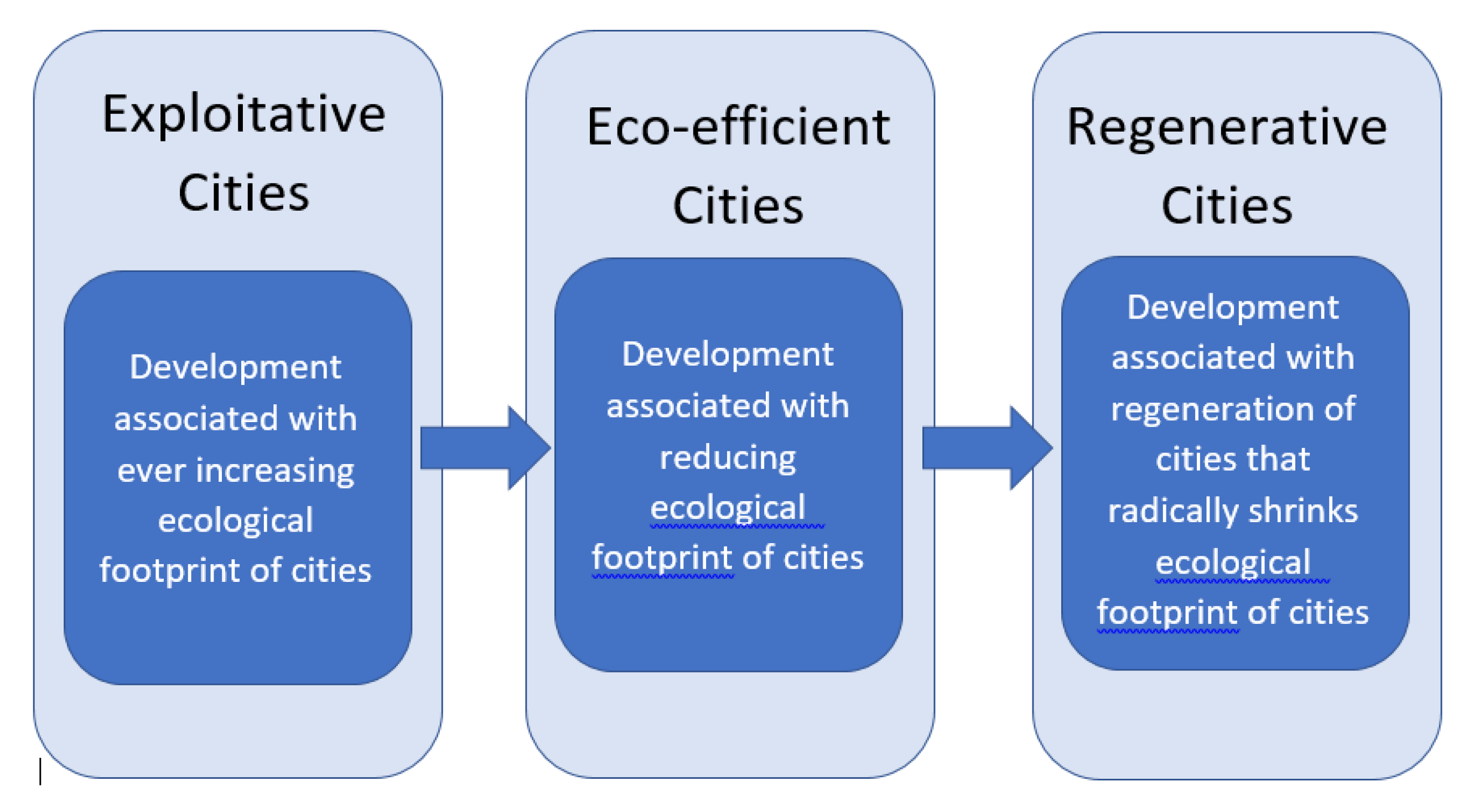
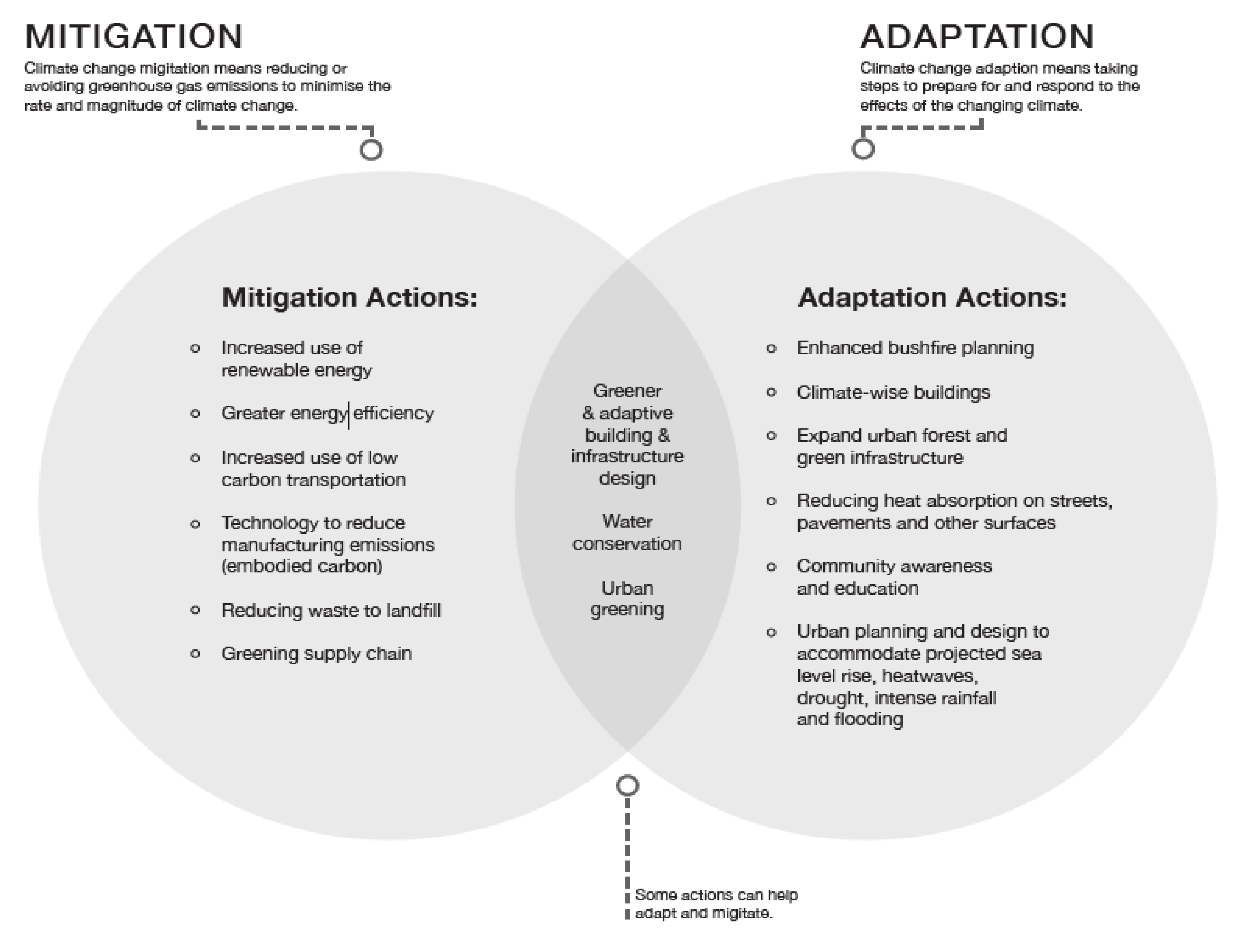
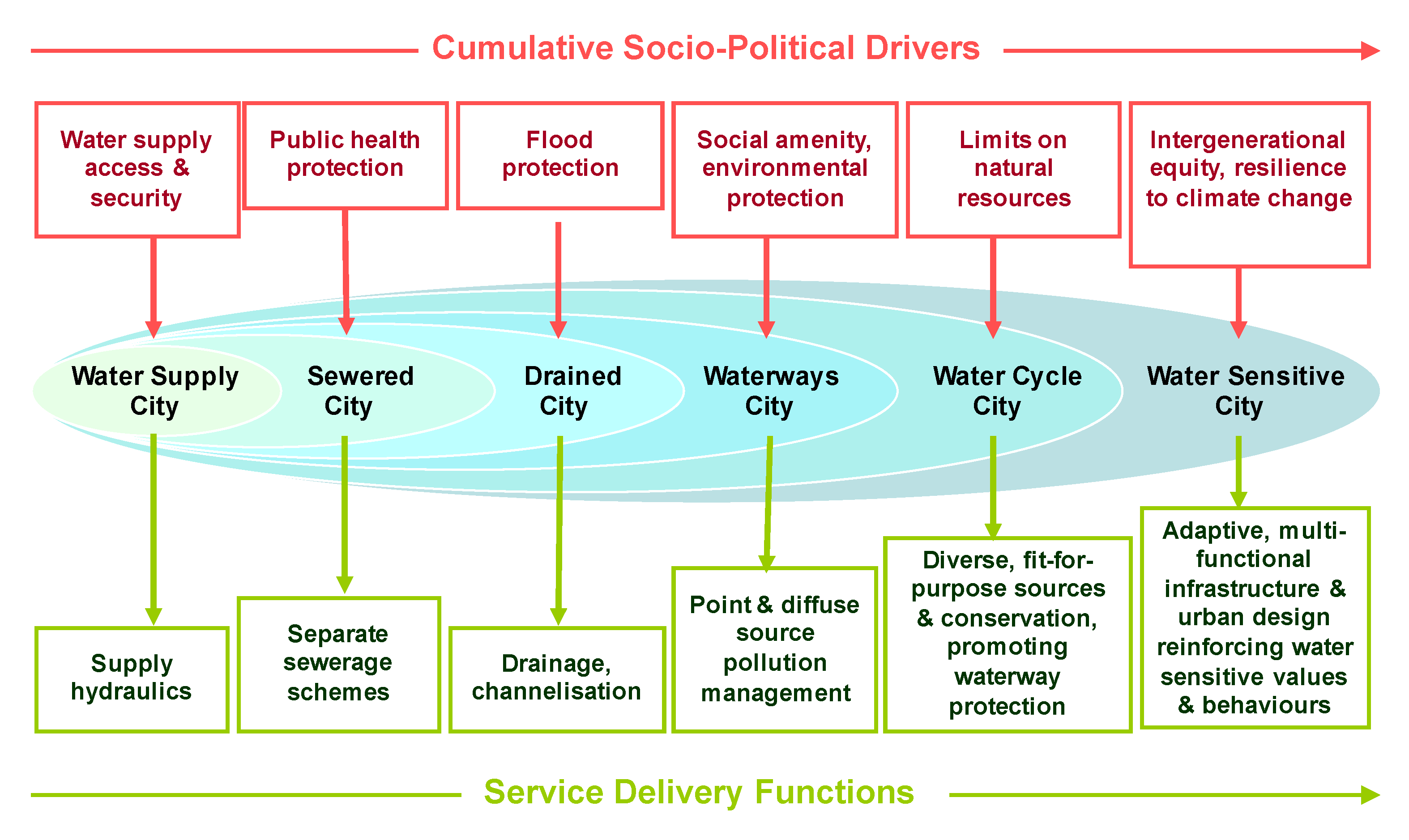
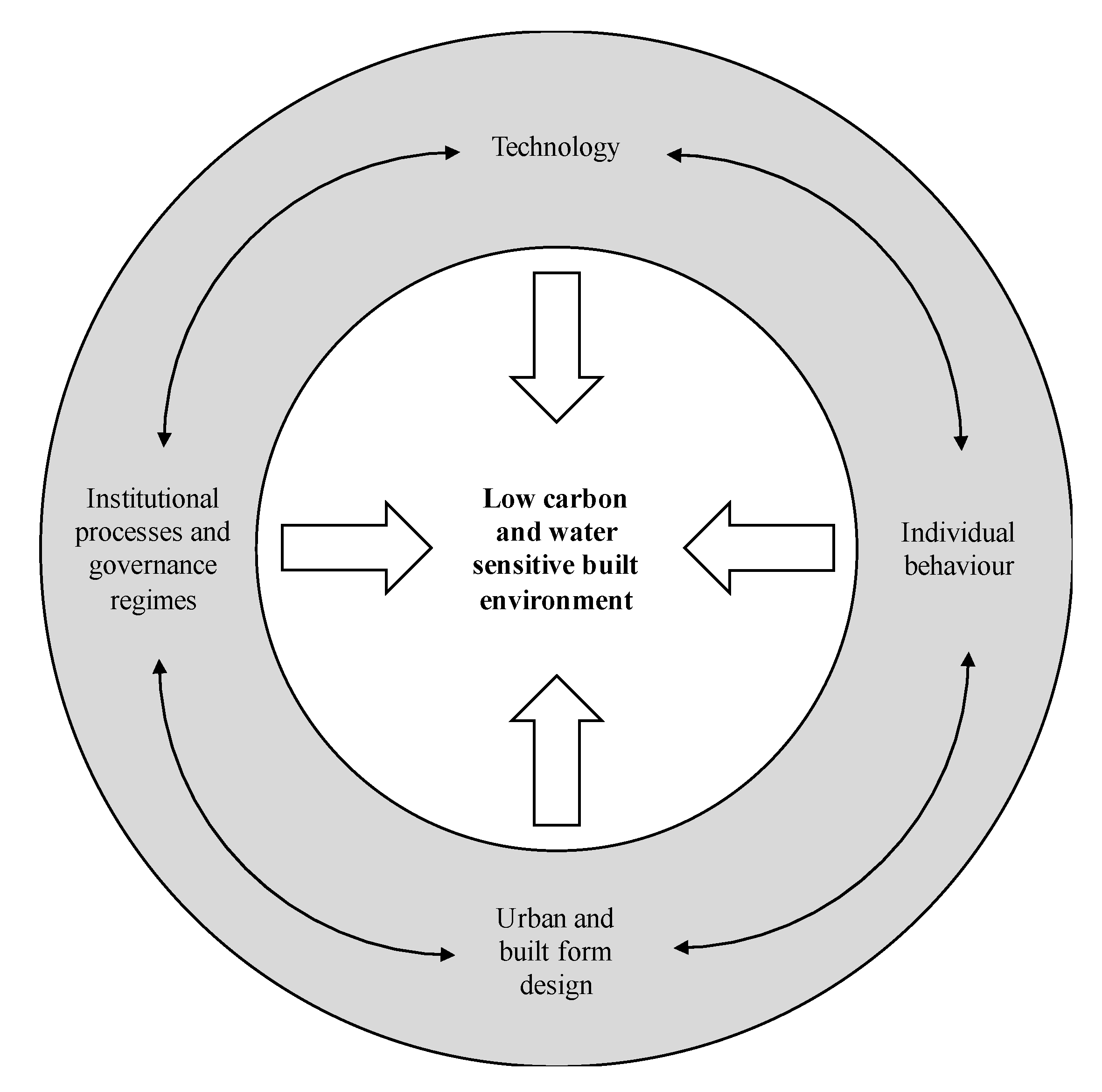


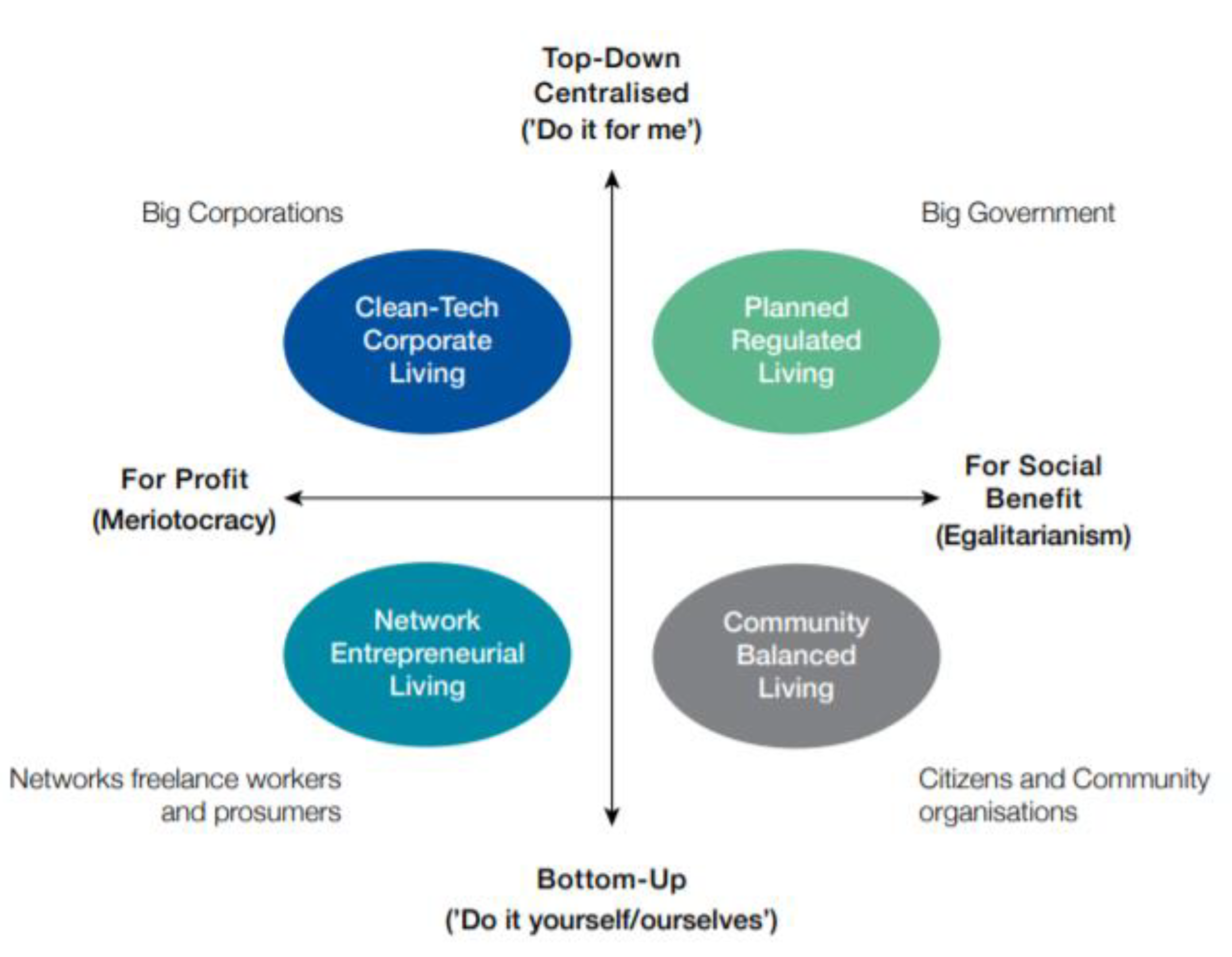
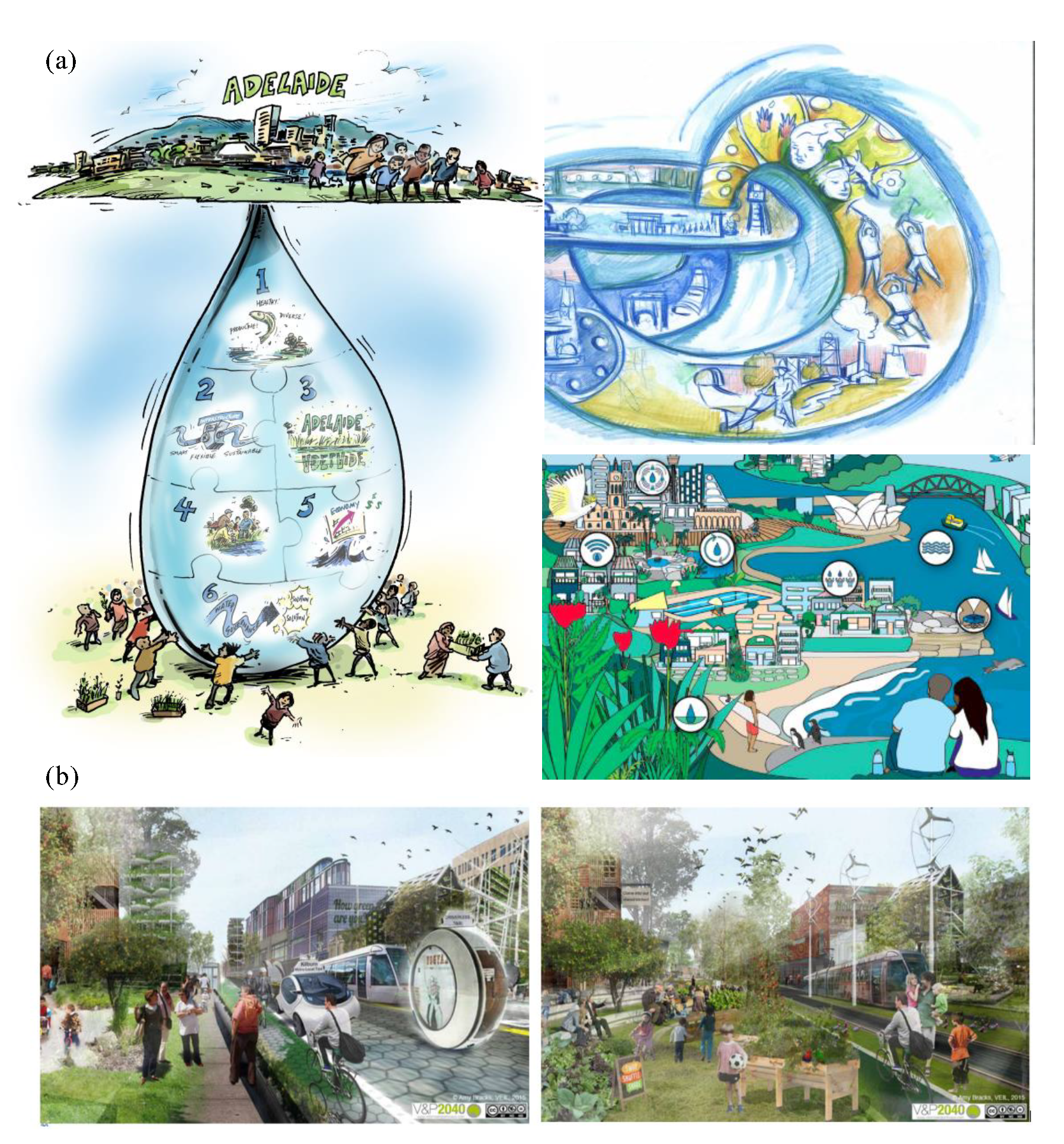
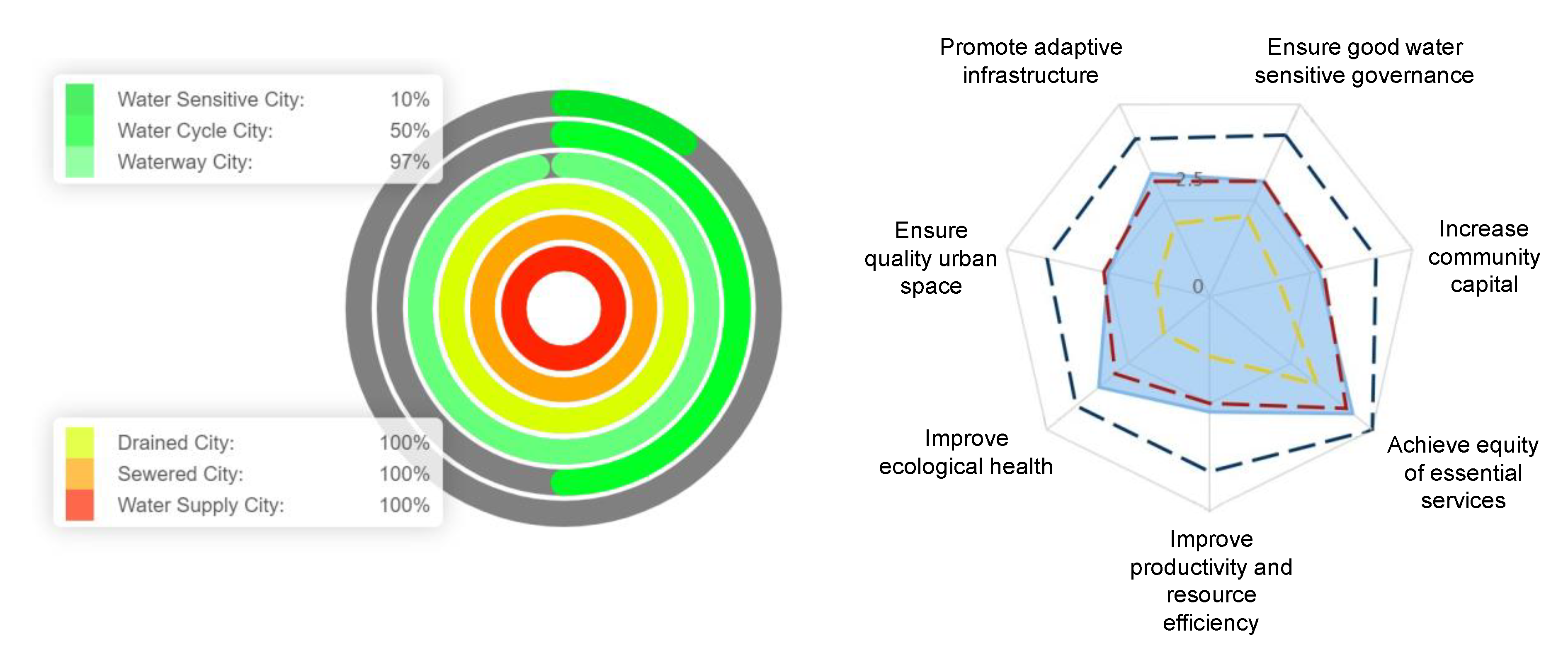


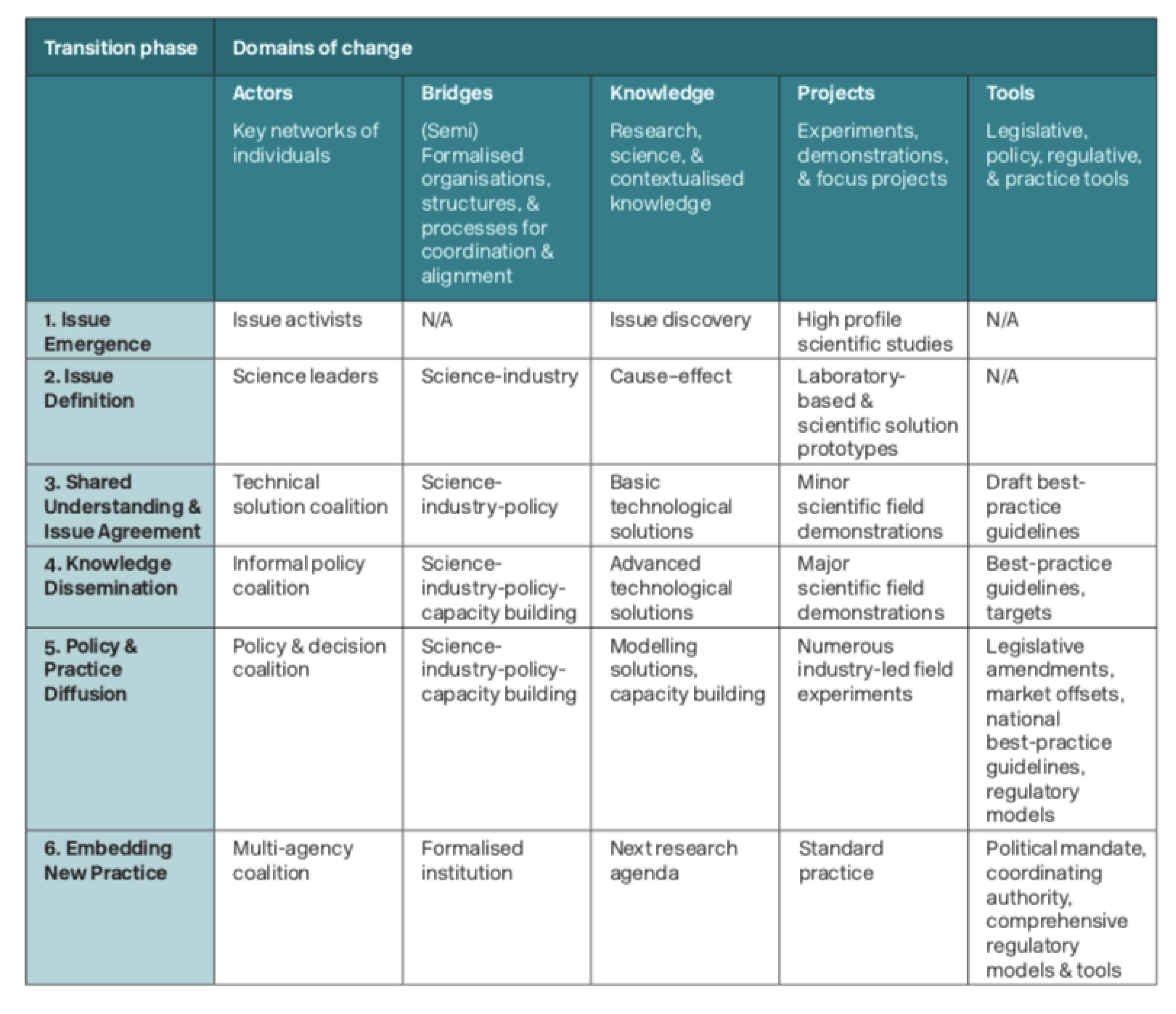
© 2020 by the authors. Licensee MDPI, Basel, Switzerland. This article is an open access article distributed under the terms and conditions of the Creative Commons Attribution (CC BY) license (http://creativecommons.org/licenses/by/4.0/).
Share and Cite
Newton, P.W.; Rogers, B.C. Transforming Built Environments: Towards Carbon Neutral and Blue-Green Cities. Sustainability 2020, 12, 4745. https://doi.org/10.3390/su12114745
Newton PW, Rogers BC. Transforming Built Environments: Towards Carbon Neutral and Blue-Green Cities. Sustainability. 2020; 12(11):4745. https://doi.org/10.3390/su12114745
Chicago/Turabian StyleNewton, Peter W., and Briony C. Rogers. 2020. "Transforming Built Environments: Towards Carbon Neutral and Blue-Green Cities" Sustainability 12, no. 11: 4745. https://doi.org/10.3390/su12114745
APA StyleNewton, P. W., & Rogers, B. C. (2020). Transforming Built Environments: Towards Carbon Neutral and Blue-Green Cities. Sustainability, 12(11), 4745. https://doi.org/10.3390/su12114745




